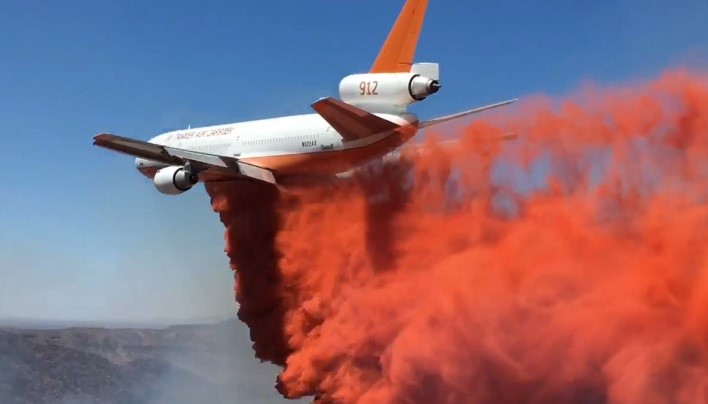By Tony Davis in The Arizona Daily Star —
From the stark, deeply incised rock face of Pusch Ridge to the spruce-lined top of Mount Lemmon, one color seems to have dominated the two-week battle of the Bighorn Fire: Flaming, searing red — maybe a cross between the hues of raspberries and some coral reefs.
It’s the color of the aerial fire retardant that firefighters dropped on many a ridgeline in an effort to slow the stubborn blaze, which has burned about 42,000 acres both inside and outside the Pusch Ridge Wilderness.
As of Thursday, 358,000 gallons of retardant — enough to fill more than 30 backyard swimming pools — had been dropped all around the Catalina Mountains. …
“There is no dispute that fire retardant slows the advance of fire through some kinds of vegetation under some weather conditions,” said Andy Stahl, director of the Forest Service Employees for Environmental Ethics, in Eugene.
But slowing fire’s advance doesn’t mean retardant actually helps meet fire suppression objectives, such as decreasing the average fire size, Stahl said.
“No studies show it does. Nor do the available data show any correlation between retardant use and these outcomes,” he said. …
Stahl said the Forest Service refuses to conduct the right kind of study to determine whether retardant really works: a “control” study to compare how a fire behaves with and without retardant, he said.
He said the Forest Service’s preliminary study on aerial firefighting’s success rate merely looked at whether retardant drops hit their targets, not at whether they changed fire behavior.


